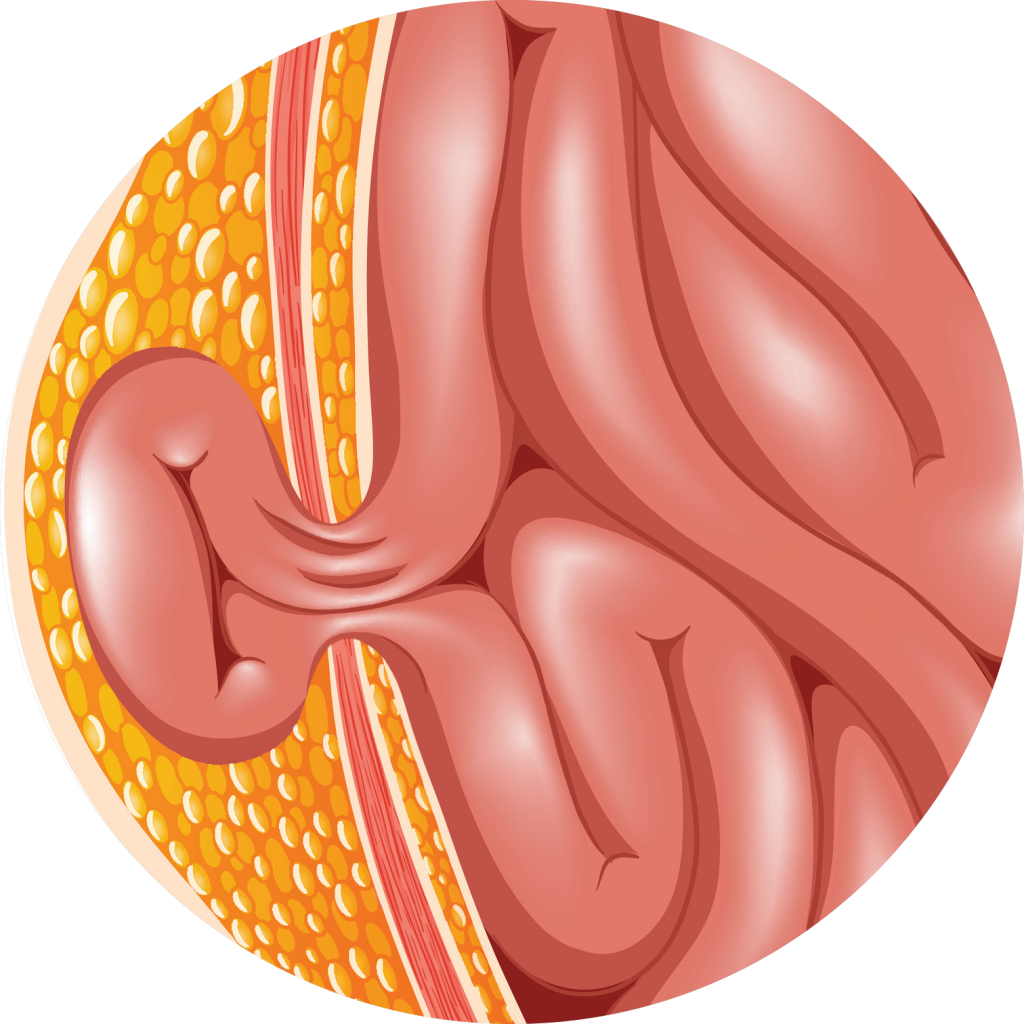What is a Hernia?
A hernia is a protrusion of intra-abdominal content through a defect caused by weakness of the muscle, tissue or membrane that is normally strong enough to hold it in place.
In the presence of an abdominal wall weakness, the skin and fat underneath it will not provide any strength and will progressively stretch allowing the hernia to grow in size.
Hernias can occur anywhere in the abdomen, but most commonly develop at common weak points such as the groin, the bellybutton (umbilicus) or in any place where a scar from previous intra-abdominal surgery is present.

Upper Body
A hiatus hernia is a condition where part of the stomach that normally resides within the abdominal cavity slides through the diaphragm into the chest.
A ventral (incisional) hernia can occur at the site of any previous open surgical procedure involving the abdominal wall and cavity.
An umbilical hernia is a small bulge around the navel (belly button) that may be congenital or acquired, occurring later in life.
Groin & Lower Body
A femoral hernia generally appears as a bulge in the upper inner thigh, lateral to the pubis and extending through a natural weakness called the femoral canal.
An inguinal hernia is an external protrusion of intra-abdominal contents through a natural weakness in this area, called the inguinal canal.
Various
Despite its name Sportsman’s hernia is not a true hernia defect but rather a chronic pain syndrome of the groin and lower abdomen, originally described in sportsmen.
Predisposing Factors, Symptoms & Complications
-
What are the predisposing factors?
- Male gender, older age and family history of hernia
- Obesity, pregnancy
- Chronic cough (smoking), chronic constipation
- Previous surgery and history of heavy lifting
-
What are the symptoms & clinical signs of hernias?
- A bulge that comes and goes, more prominent on standing, straining, or coughing.
- Pain, discomfort, burning or ‘dragging’ sensation at the site of the bulge
- Pain exacerbated when bending over, coughing or lifting
- Incarceration (non-reducible bulge) when the hernia content can’t be pushed back in
-
What are the potential complications of hernias if left untreated?
- Over time hernias tend to get bigger as the defect in the muscle stretches
- If left unrepaired, there is a risk that a complication may occur:
- This may cause bowel obstruction secondary to hernia strangulation
- Strangulation occurs when the incarcerated hernia content remains out and the edges of the defect cause such pressure on the blood vessels that the herniated tissue loses its blood supply.
- Concerning symptoms are abdominal bloating, severe pain, nausea, vomiting, swelling, skin redness and fever
- This is an emergency and warrants prompt attention at hospital
Wish to book an appointment or looking for some more information about our services,
get in touch and we will be happy to assist.
